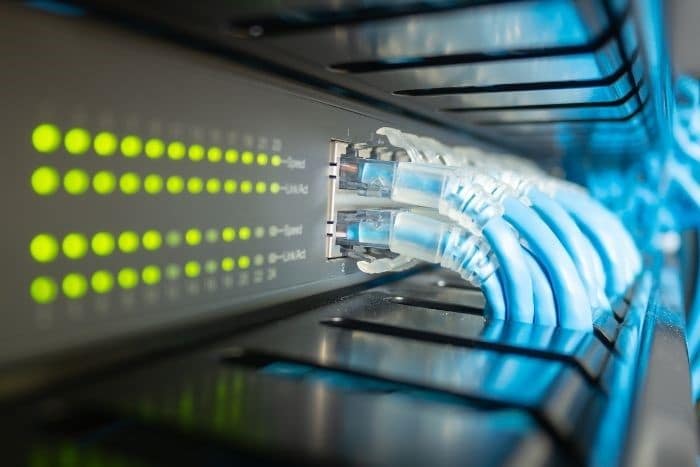Ethernet in Computer Networks: The Backbone of Modern Connectivity 2023
Introduction;
The bulk of wired local area networks (LANs) in use today are supported by Ethernet, a fundamental technology sometimes referred to as the workhorse of computer networks. Ethernet has changed dramatically since its introduction in the 1970s, always adjusting to meet the ever-increasing demands of contemporary networking. This essay will examine Ethernet’s fundamental function in computer networks, its historical development, and its ongoing applicability in the era of fast data transfer.
Invented Ethernet
Robert Metcalfe and his colleagues invented Ethernet at Xerox’s Palo Alto Research Center (PARC) in the early 1970s. Connecting computers in the same building or on the same campus allowed them to share resources and communicate with one another. 2.94 Mbps (megabits per second) was the maximum data transmission speed that the original Ethernet protocol also referred to as Ethernet Version
The Standardization and Popularity of Ethernet
Ethernet’s affordability and ease of use led to its rapid rise in popularity. Several Ethernet standards appeared in the late 1970s and early 1980s, with Ethernet Version 2 (Ethernet II) emerging as the most widely used. This standard used coaxial wires and a bus topology to improve the data transmission rate to 10 Mbps. Due to its quick uptake, Ethernet was standardized as IEEE 802.3 by the Institute of Electrical and Electronics Engineers (IEEE).

The Ethernet’s Development
With the growth of computer networks and the realization of the need for faster data transfer speeds, Ethernet saw numerous noteworthy developments.
Fast Ethernet (IEEE 802.3u):
Developed from the original Ethernet standard, Fast Ethernet first appeared in the early 1990s. It was ten times quicker than its predecessor, with data transfer rates reaching 100 Mbps. Fast Ethernet ensured a seamless transition by using twisted-pair wires and being interoperable with already-existing Ethernet Computer Networks.
Gigabit Ethernet (IEEE 802.3ab):
Gigabit Ethernet emerged in response to the increasing need for high-speed data transfer and the growth of multimedia applications. It became the industry standard for linking devices within local Computer Networks and data centers, providing 1 Gbps (gigabit per second) of data speeds.
10 Gigabit Ethernet (IEEE 802.3ae):
Designed to satisfy the demands of high-performance computing settings, 10 Gigabit Ethernet was introduced as data-intensive applications continued to thrive. It provided 10 Gbps data rates, allowing for quicker and more effective data transport.
The 40 Gigabit and 100 Gigabit Ethernet standards were created in response to the needs of large-scale Computer Networks and data centers. In cloud computing and enterprise settings, they enable fast data exchange with data rates of 40 Gbps and 100 Gbps, respectively.
Nowadays, Ethernet
Ethernet is still the most widely used technology for wired LANs and is now a necessity in the majority of residences and workplaces. Several significant benefits account for its widespread use:
Ethernet has a high degree of backward compatibility, which makes it easy to incorporate newer technologies into Computer Networks that already exist. Its ongoing appeal can be attributed in part to its versatility.
Ethernet is renowned for its resilience and low error rates, which provide steady and reliable network performance. Applications that demand minimal latency, including online gaming and real-time video conferencing, depend heavily on this dependability.
Scalability:
Ethernet has unmatched scalability. It can be installed in huge data centers with thousands of servers or in tiny office Computer Networks with a few devices. Because of its adaptability, Ethernet can be used for a variety of network sizes and purposes.
Cost-Effectiveness:
Ethernet Computer Networks has a well-established infrastructure that includes reasonably priced networking hardware and cables, making it cost-effective. It is becoming the preferred option for both consumers and corporations due to its accessibility.

Speed:
Data transfer speeds Computer Networks have kept up with the growing need for high-bandwidth applications as Ethernet standards have evolved. Fast data transfer is made possible by contemporary Ethernet standards like 10 Gigabit and 100 Gigabit Ethernet, which makes them perfect for tasks requiring a lot of data.
Conclusion:
Ethernet’s path from its modest origins in the 1970s to its current position as a fundamental component of contemporary computer Computer Networks is evidence of its flexibility and durability Computer Networks. Its progression from 2.94 Mbps technology to standards that can reach 100 Gbps and more demonstrates its ongoing importance in the data-driven world of today.
Ethernet is a vital tool for companies Computer Networks, organizations, and individuals due to its interoperability, scalability, affordability, and speed. Ethernet is expected to be at the forefront of the digital environment as long as it can continue to provide the connectivity required to drive future breakthroughs. Ethernet is therefore the unsung hero that keeps everything linked, whether you’re streaming videos at home or running a massive data center.
Related article:
VoIP Wholesale Providers: The Future and Top players in 2023 | My Country Mobile
Efficiency Meets Branding: White Label LinkedIn Lead Generation’s Impact
